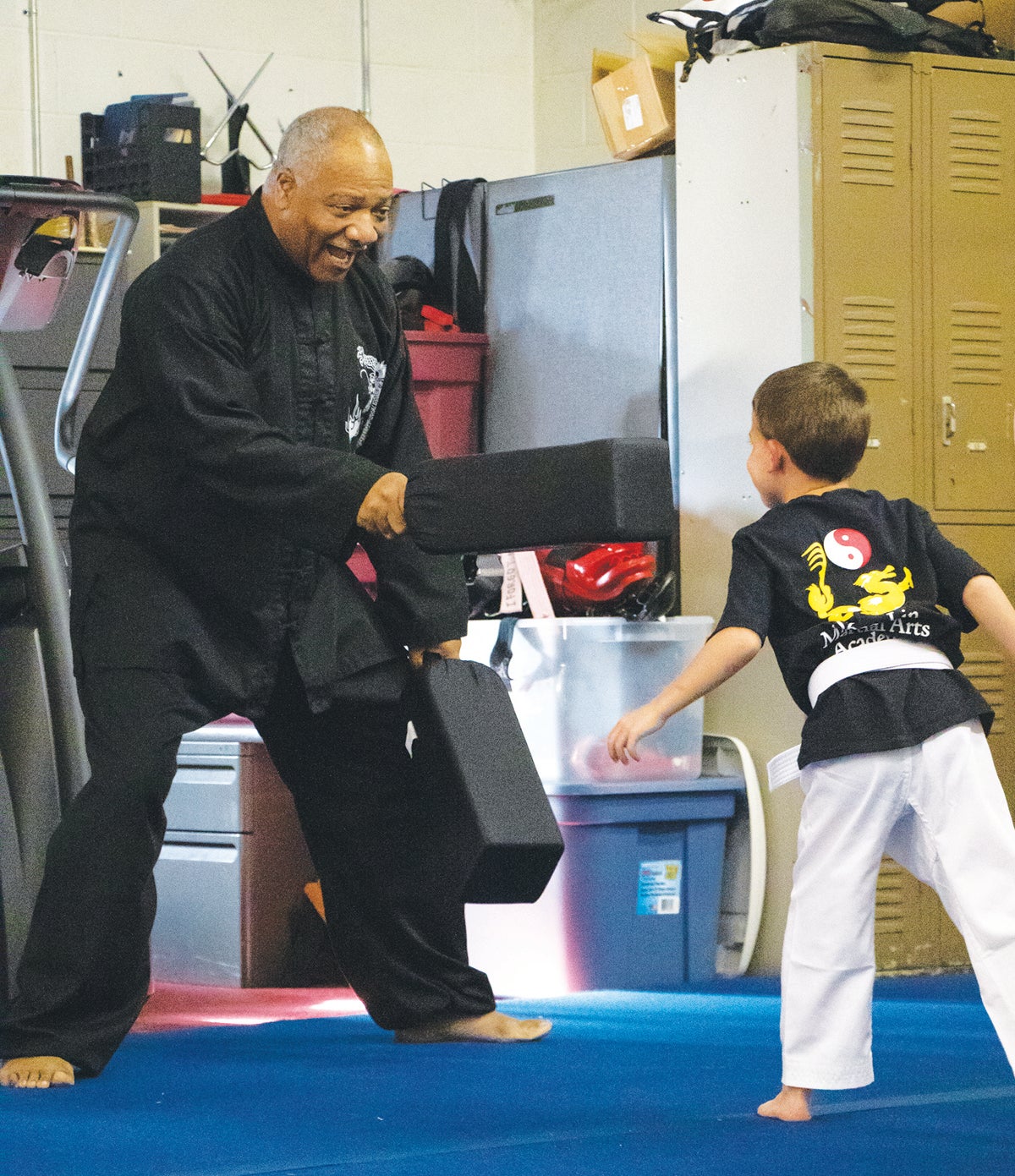Meet Your Neighbor: Tim Nance shares passion for martial arts
Published 10:08 am Thursday, May 16, 2019

- Tim Nance instructs his young shaolin class. (Photo by Nacogdoches Miller)
By Nacogdoches Miller
Sun Intern
Finding balance is a lesson that has shaped the work of Tim Nance’s Shaolin Dojo.
Juggling three jobs, Nance would start his day as a paper carrier for The Winchester Sun, only to head to Leeds Theater, where after cleaning up the last show, he would change the marquee before going home to prepare for school.
A fan of the martial arts legends like Bruce Lee and Chuck Norris, it was the theater job that gave him the chance to watch his heroes.
Nance’s passion has taken him all over Asia, learning the origins and history of Shaolin and spending 40 years learning the physical art he watched on the big screen.
Now, master of Shaolin Mixed Martial Arts Academy, Nance spends time helping others learn to find balance in their own lives.
“With shaolin we don’t only learn to destroy, we have to learn to heal as well,” Nance, an eighth-degree black belt, said. “When you say karate, you think learn to fight, well, we learn how not to fight. But we do along the way learn how to protect ourselves.”
Winchester Sun: How did you get started in martial arts?
Tim Nance: “Working for The Winchester Sun. I was a news carrier back in the day and I would take a short cut across the Belmont field behind Hannah McClure. I would hear these guy’s yelling and jumping up and down in their pajamas, so I would take a break. I’d stop and peep in the door and they invited me in at that point.”
WS: What encouraged you to get started with it after that?
TN: “I wanted to train to do something, I had heard about karate and I also had three jobs.
At The Winchester Sun, I was a news carrier, so I had 244 newspapers I delivered every day and I worked at Leeds Theater at night changing marquees and cleaning up. I would always get into the movies for free and I would see Bruce Lee and all of the martial artist, Sonny Chiba and Chuck Norris. That was something that interested me at the time way back then. These guys were doing something similar, so I said, ‘I want to try and do this stuff.’ That’s what got me started.”
WS: Did you know at the time shaolin was something you wanted to go into?
TN: “No, it wasn’t called (shaolin) at the time, it was called (karate). Cause that was something everybody knew. But, there is several styles of karate which is martial arts, that’s the real word for it. And kung fu was just one of them and shaolin was used as the word karate because nobody knew what kung fu was back then. They knew karate, because the guys came through the military from the Korean War and they would learn karate. But nobody knew what the word kung fu was. Until I got deeper and deeper into it and got back to the origin over in China, I went to Tibet and went to the Shaolin Temple and learned all about it when I went over there.”
WS: How long did you spend at the temple?
TN: “We spent a month over there. Went to China Tibet, the Shaolin Temple, studied there. There’s a lot of places over there I went to. Then Japan, Tiananmen Square, Beijing.”
WS: Where you over their just for the history of it or for training as well?
TN: “Training as well. Our instructor wanted us to go back to the origin. We would demonstrate over there how we practice here, and they would demonstrate for us how they do it over there. Sharing of information, for the art itself so we could actually see exactly where it came from.”
WS: Was there any kind of difference at all between what you all practice and how they performed?
TN: “No, it’s just that they would have lighter weapons than what we have over here. That surprised me, I don’t know why, but they had what they called wushu weapons. They are real light and kind of flimsy. You’ve seen them do demonstrations with these swords, they were kind of wobbly and flashy. Performance wushu is kind of a dance basically, its kung fu but they do a lot of acrobatics and aerial stuff. You couldn’t do that with the heavy weapons in your hand. So, that’s why they were probably using light weapons to do some of the stuff they were doing.”
WS: Who was your instructor you learned under?
TN: “Sin Kwang Thé. He still comes to Kentucky to my school every six months and tests my students. He was just here in March.”
WS: Did you know you wanted to become an instructor or was that something you worked your way into?
TN: “I worked my way into it. I was led to be an instructor. After you learn you start learning more by training others. I didn’t really know that but, that’s where it led me.
Because as you get up in to the upper ranks you would be instructed to work with this group over here and this group here.
As students come up through the ranks, as a matter of respect, in order to get you to help them they have to show respect to you based on what you know. And as you’re showing them you learn because they ask you questions that you would never think of. So, it’s a continuous thing, even now.”





